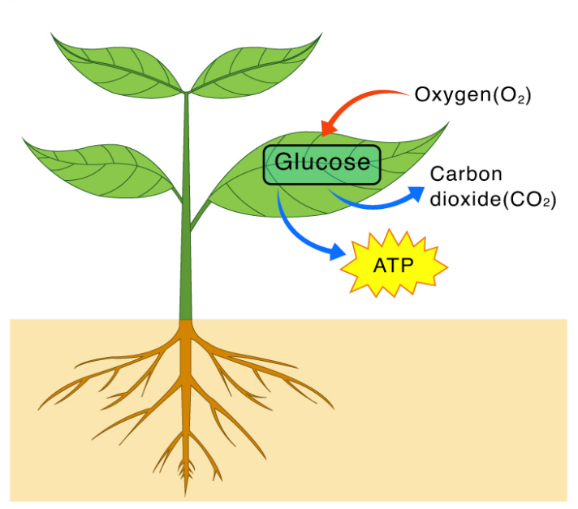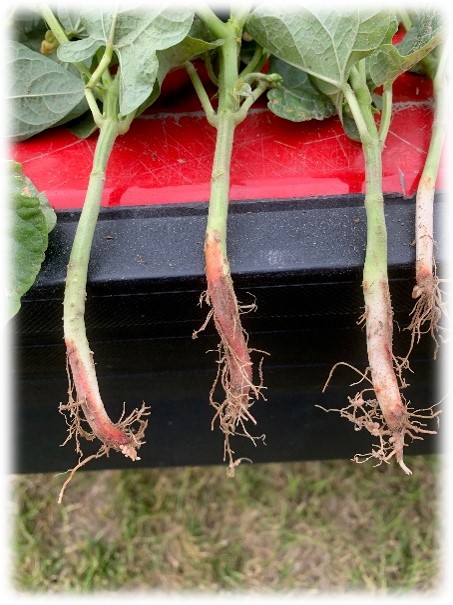Waterlogging and the 2023 dry bean crop
It has been a unique growing season due to precipitation challenges. The dry bean season started off very dry. However, so far in July we have received more rainfall than average.

“My beans got some rain, maybe a little more than I would have liked. Now they look bad. What happened?” This conversation has been all too common through the mid-season of 2023. Across Michigan it has been a unique growing season due to precipitation challenges. The dry bean season started off very dry, May and June had precipitation totals that were lower than normal by approximately 50% for each month. However, so far in July we have received +1.76” more rainfall than average, roughly 50% more than normal. This precipitation pattern has had interesting effects on our current 2023 dry bean crop. A dry planting season resulted in dry beans being planted deeper than normal in attempt to reach moisture and produce uniform emergence. In some locations, moisture was difficult to reach and dry soils were very firm/compacted along the seed trench. The deep planting depth resulted in uniform stands on average when moisture was reached, but slow early season growth was observed. This was a combined response of limited soil moisture and hindered root growth in some locations due to soil conditions. Once rainfall did return to normal/above normal frequency in late June, crop damage began to appear particularly in regions that received excessive precipitation. While this damage is not uncommon from prolonged periods of soil saturation, many noted the extent of the damage was greater, and quicker, than expected based on the rainfall amount that was received. This damage is commonly referred to as waterlogging and is the result of saturation in the soil profile resulting in a lack of dissolved oxygen.
This raises a few questions to mind when thinking about what happened so far this year:
- Why does this happen?
- How did it happen so fast, my beans wilted very quickly after rainfall began?
- Why do we see prolonged injury into the season after initial waterlogging?
To address these questions we go back to the basics of agronomy/ crop physiology: all plants, dry beans included, require 17 essential elements for growth. These include mineral elements: nitrogen, phosphorus, potassium, calcium, magnesium, sulfur, boron, chlorine, iron, zinc, copper, molybdenum, and nickel and non-mineral elements including: hydrogen, oxygen and water. Oxygen and water will be key to this discussion. We also all remember that plants go through the process of photosynthesis, where plants convert carbon dioxide and water into glucose (sugar) using energy from sunlight to fuel the process. This process takes place during daylight hours in the green, above ground tissue of the plant (Figure 1). However, the partner process to photosynthesis is respiration. Respiration is the process by which plants breakdown the glucose produced by photosynthesis and release it as energy (ATP) for the cellular functions of the plant. This process takes place in all tissues of the plant (roots included) and is actually a similar process to respiration that occurs in animals (Figure 2).


These two processes are key to understand the beginning of the issues that arise from waterlogging in dry beans. Stress that results from excessive water in the soil profile can be placed in two categories: hypoxia (low levels of oxygen) and anoxia (absence of oxygen). Both of these conditions severely impact plant growth, with anoxia generally being more severe than hypoxia. To put this into practical terms, the center of ‘low holes’, or the lowest depressions within a field, experience prolonged anoxia (beans generally die), while the edges only experience hypoxia (beans severely yellow but may recover). However, when plant roots experience low oxygen environments (hypoxia or anoxia), like in water logging, the process of respiration flips a switch. It goes from a process that is done while utilizing oxygen, to a process that does not utilize oxygen in order to keep the plant cells alive, functioning, and supplied with energy. Basically, bean roots are attempting to breath underwater as a survival mechanism. Similar to animals, this process does not work well for long periods of time and the result is that parts of the root systems will die off. This year may have been particularly stressful for bean root systems, as the extreme dry conditions had led to beans developing a deeper root system, which is more vulnerable to waterlogging and hypoxia.
When respiration goes anaerobic (without oxygen) plants often face physiologic damage from reactive oxygen species (ROS) (toxins produced by the process of respiration without oxygen). To put this into perspective, ROS is involved in group 22 (Photosystem I inhibiting) herbicides such as paraquat (gramoxone). In sufficient concentration, ROS can lead to rapid leaf wilting and drop. This also affects the efficiency of photosynthesis and can cause physiological changes in the plant, such as translocation of carbohydrate reserves for survival. While this is less than ideal for crop growth, we often find that in our well drained field dry beans will survive the initial waterlogging and return to a normal respiration process. However, once waterlogged they will often struggle for the remainder of the season.
This prolonged injury is a result of the plant needing to rebuild its root system. With much of the root system gone, adventitious roots will form on the hypocotyl and begin to replace the original root system. Different bean marketclasses are better at making adventitious roots. For example, Middle American beans (black, navy, etc.) tend to produce more adventitious roots more quickly than Andean beans (cranberry, red kidneys, etc.). Ironically, waterlogged roots also tend to be poor at conducting water through the plant system, reducing overall nutrient and water uptake. With a poorly preforming root system, the plan cannot properly support its above ground shoots and leaves and may show suspended growth for a short period.
Equally contributing to the damage throughout the growing seasons, fungal and fungal-like pathogens in our soils that thrive under saturated soil conditions and slow root growth after waterlogging. The disease is commonly called ‘root rot’. However, often root rot is not one specific pathogen, but rather a complex of multiple pathogens including: Fusarium, Rhizoctonia, and Pythium species. Some of these pathogens are favored by waterlogged conditions. For example, Pythium species produce zoospores that can swim in free water towards plant roots. As these root rot species infect dry bean roots, visible symptoms can appear that include: sunken reddish brown lesions on roots and hypocotyl, death of primary root, and development of lateral roots above the infection site in attempt to recover. Above ground symptoms become visible shortly after below ground symptoms and can include stunted growth, yellowing, leaf drop, and dark streaking in vascular tissue up to the first node. Overall root death and damage can lead to deficiency of essential macronutrients including nitrogen, potassium and water. While no varieties are resistant to root rot, some are more tolerant than others. Screening at MSU for tolerance to Rhizoctonia solani (a virulent pathogen) has documented that popular commercial lines of: ‘Spectre’, ‘HMS Bounty’, and ‘Liberty’ were more tolerant than average. While ‘Black tails’, ‘Medalist’, and ‘Viper’ were less tolerant to Rhizoctonia than average. This can be impactful information for future variety selection when considering production in fields that have more damage in 2023.

In summary:
- Why does this happen?: Oxygen is needed by the plant for normal function and growth just like you and me! Roots included.
- How did it happen so fast, my beans wilted very quickly after rainfall began: As stated above, lack of oxygen interferes with the natural respiration process and causes the production of ROS (toxins) under this type of severe stress. Symptoms were exaggerated in nature in 2023 due to warm sunny growing conditions during periods of low oxygen availability in the soil. Warm conditions and sun drove up photosynthetic and respiration rates, increasing the demand for energy, and producing more toxins (ROS, etc.) under oxygen limiting conditions. A perfect storm for crop injury.
- Why do we see prolonged injury into the season after initial waterlogging?: Prolonged injury and lack of recovery, more times than not, is the result of the compounding effects of root rot. Depending on soil and environmental conditions, yield loss can range from slight to severe as a direct response of disease severity. The now damaged roots would benefit from light, timely rains that will be essential in the recovery of the damaged portions of the field.



 Print
Print Email
Email